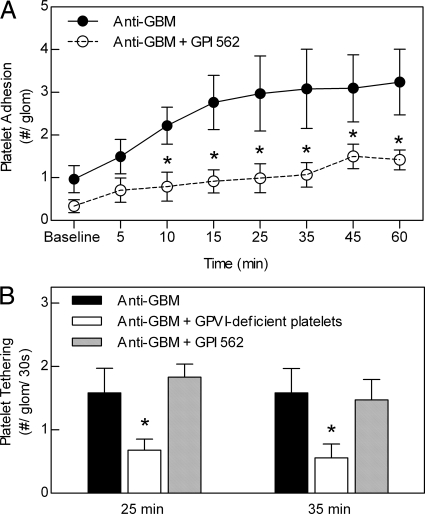Figure 4.
Inhibition of αIIbβ3 reduces anti-GBM antibody-induced glomerular platelet recruitment within glomeruli via an effect on stable adhesion. A: To assess the role of platelet αIIbβ3 in glomerular platelet recruitment, mice were pretreated with the αIIbβ3 inhibitor, GPI562 (4 mg/kg, i.v., n = 6) before assessment of anti-GBM antibody-induced platelet recruitment. Data were compared with that of mice treated with anti-GBM antibody alone (n = 6). Data are shown as mean ± SEM. *P < 0.05 versus anti-GBM antibody-treated group for each time point. B: Assessment of the contribution of platelet GPVI and αIIbβ3 to platelet tethering (primary adhesion) within the inflamed glomerulus. Transient (>10s) interactions of CFSE-labeled platelets with the glomerulus (tethering) were quantified in mice treated with anti-GBM antibody alone, or in mice that received anti-GBM antibody and GPVI-deficient platelets, or anti-GBM antibody plus GPI562, 25 and 35 minutes after anti-GBM antibody administration (n = 6 for all groups). Data are shown as mean ± SEM. *P < 0.05 versus anti-GBM antibody alone group.

